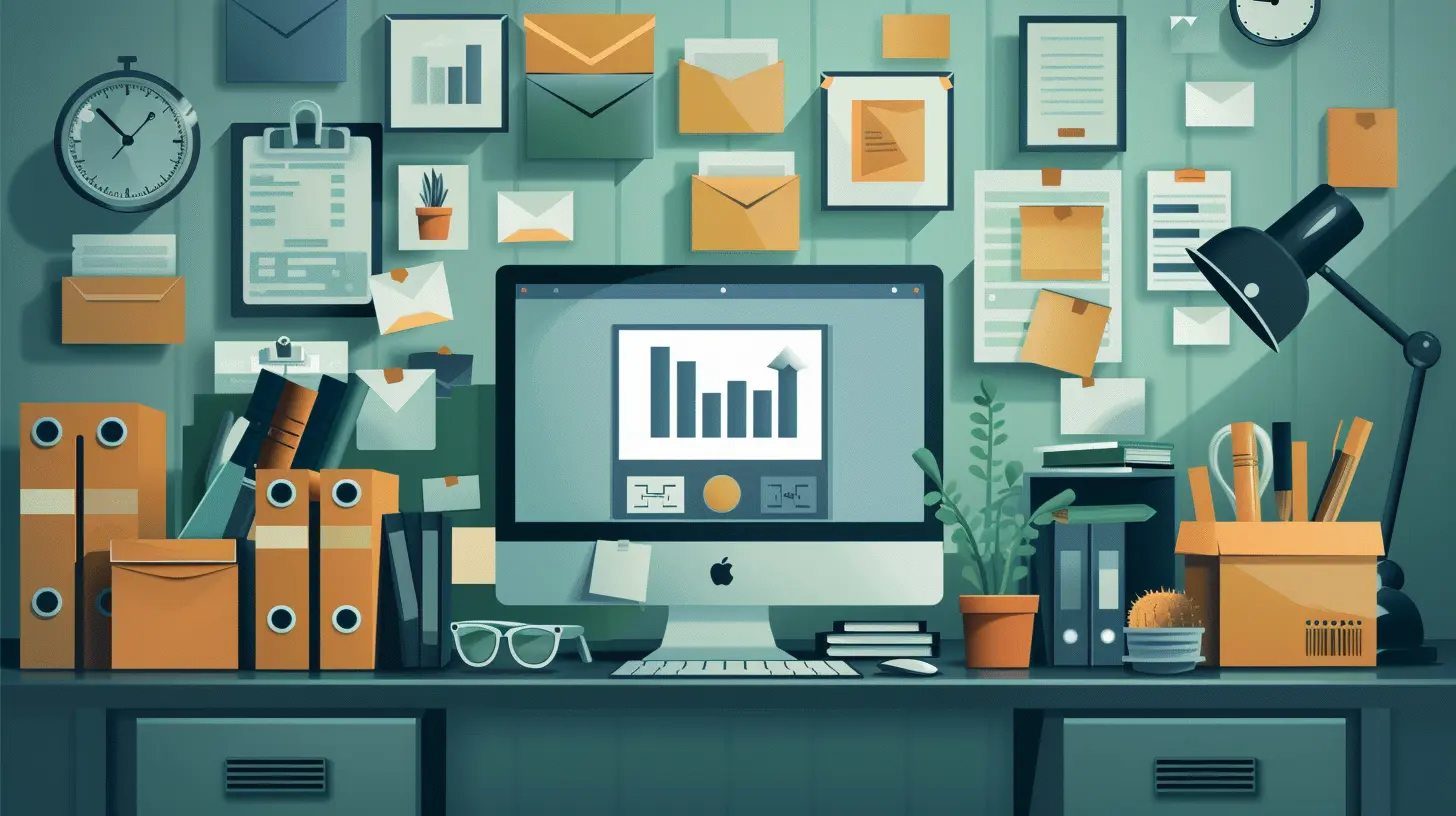The Subscription Economy: How to Make It Work for Your Business
14 November 2025
The subscription economy is booming. From software to snacks, businesses across industries are adopting the subscription model to create predictable revenue and deepen customer relationships. But is it the right move for you? And if so, how can you make it work?
In this article, we'll dive into the subscription economy, its benefits, challenges, and practical steps you can take to build a successful subscription-based business.

What Is the Subscription Economy?
Simply put, the subscription economy revolves around offering products or services on a recurring basis—weekly, monthly, or annually. Instead of making a one-time purchase, customers pay regularly to access a product or service.Think about streaming services like Netflix or Spotify. Rather than buying movies or music individually, you subscribe and get continuous access. The same model is now being applied to industries you wouldn't have expected—razors, pet food, meal kits, even automobile subscriptions!

Why Are Businesses Shifting to Subscriptions?
So, why are so many businesses embracing this model? There are a few compelling reasons:1. Predictable Revenue Streams
Subscriptions create a steady and predictable cash flow. Unlike traditional sales that fluctuate, recurring revenue helps businesses plan better for growth and expenses.2. Stronger Customer Relationships
You’re not just selling once—you’re building an ongoing relationship with customers. This allows brands to continuously engage, offer value, and improve their offerings based on customer feedback.3. Higher Customer Lifetime Value (CLV)
Customer acquisition is expensive, but with subscriptions, businesses can maximize customer lifetime value. Instead of a one-time transaction, customers continue paying over time, leading to increased revenue per person.4. Convenience for Customers
Modern consumers love convenience. Subscriptions eliminate the hassle of repurchasing, making it easier for customers to stay loyal to a brand.5. Better Inventory & Demand Planning
For businesses handling physical products, knowing how many subscribers you have helps in forecasting demand, reducing waste, and streamlining supply chain operations.
Challenges of the Subscription Model
While the subscription economy offers plenty of benefits, it also comes with its fair share of hurdles. Here’s what you need to watch out for:1. Customer Retention Is Key
Acquiring subscribers is great, but keeping them is the real challenge. If customers don’t see consistent value, they’ll cancel quickly.2. Subscription Fatigue
Consumers are bombarded with subscription options. If your offer isn’t compelling or unique, people may hesitate to add "another subscription" to their list.3. Managing Churn
Churn—when customers cancel—is a big concern. A high churn rate can damage your business. Reducing churn means offering continued value, great customer service, and incentives to stick around.4. Pricing Strategy Dilemmas
Price too high, and you risk turning people away. Price too low, and your profit margins suffer. Finding the sweet spot is crucial.5. Continuous Value Delivery
With traditional sales, customers pay once and own the product. With subscriptions, they expect ongoing value. If they ever feel like they’re paying for something they no longer need or enjoy, they’ll leave.
How to Make the Subscription Model Work for Your Business
If you're considering jumping into the subscription economy, here’s how to do it right:1. Identify the Right Subscription Model
Not all subscriptions are the same. Depending on your business, you may choose one of these models:- Replenishment Model: Customers receive essential products regularly (e.g., Dollar Shave Club for razors, Amazon Subscribe & Save).
- Access Model: Users pay for ongoing access to content or services (e.g., Netflix, Adobe Creative Cloud).
- Curation Model: Customers receive a curated selection of items each billing cycle (e.g., Birchbox, FabFitFun).
- Hybrid Model: A mix of two or more models to provide both access and products (e.g., Peloton, which sells hardware plus digital subscriptions).
Choose a model that makes sense for your business and target audience.
2. Focus on Customer Experience
Subscribers expect a seamless experience. Ensure your sign-up process is simple, your billing system is efficient, and customers can easily manage (or even pause) their subscriptions.3. Offer a Free Trial or Introductory Pricing
People love trying before committing. Free trials or discounted first-month offers help lower the barrier to entry and encourage sign-ups. Just make sure you have a strategy to convert trial users into paying subscribers.4. Pricing It Right
Test different price points and gather feedback. Consider offering multiple tiers—like a basic plan, standard plan, and premium plan—so customers can choose what suits them best.5. Prioritize Engagement & Value
Subscribers should always feel like they’re getting their money’s worth. Provide regular updates, exclusive perks, or personalized recommendations to keep them engaged.6. Reduce Churn with Smart Retention Strategies
Churn is inevitable, but you can minimize it by:- Offering exclusive discounts for loyal subscribers
- Sending reminder emails before renewals
- Gathering feedback from canceling customers and acting on it
- Giving the option to pause instead of canceling completely
7. Leverage Data & Personalization
Data is your best friend in the subscription economy. By analyzing subscriber behavior, you can tailor offers, recommend products, and deliver a more personalized experience.For example, Spotify’s personalized playlists keep users engaged, while Amazon Prime offers perks like fast shipping and exclusive deals to enhance value.
8. Invest in Excellent Customer Support
Subscribers may have billing issues, product concerns, or general questions. Having accessible and helpful customer support can make a huge difference in retention.9. Build a Community Around Your Subscription
People love being part of a tribe. Whether it’s an exclusive Facebook group, VIP discounts, or early access to new products, creating a sense of belonging enhances loyalty.Think about how brands like Peloton cultivate a dedicated community through live classes and social features. They don’t just sell an exercise bike—they sell an engaging lifestyle.
10. Continuously Innovate
The subscription economy is evolving fast. Stay ahead by continuously improving your offerings, introducing new perks, and keeping up with trends. A stagnant subscription business is a dying one.Is the Subscription Model Right for Your Business?
The subscription model isn’t for everyone. Before jumping in, ask yourself:- Does my product or service offer recurring value?
- Will my target audience prefer subscriptions over one-time purchases?
- Can I maintain quality and engagement long-term?
- Is my business ready to handle recurring billing and logistics?
If the answer to these questions is yes, then the subscription economy could be a game-changer for your business.
Final Thoughts
The subscription economy isn’t just a trend—it’s a shift in how businesses and consumers interact. While it comes with challenges, the potential for stable revenue, deeper customer relationships, and long-term growth makes it a compelling business model.If you can nail pricing, customer experience, and engagement, your subscription-based business has the potential to thrive in this evolving landscape. So, are you ready to make it work for your business?
all images in this post were generated using AI tools
Category:
Business ModelsAuthor:

Baylor McFarlin
Discussion
rate this article
1 comments
Gideon Phelps
Great insights! The subscription model offers intriguing opportunities for businesses to enhance customer loyalty and predictable revenue. I’m curious about how emerging technologies could further innovate this space. What strategies have you found most effective in retaining subscribers long-term? Looking forward to exploring this dynamic landscape!
November 14, 2025 at 4:34 AM


